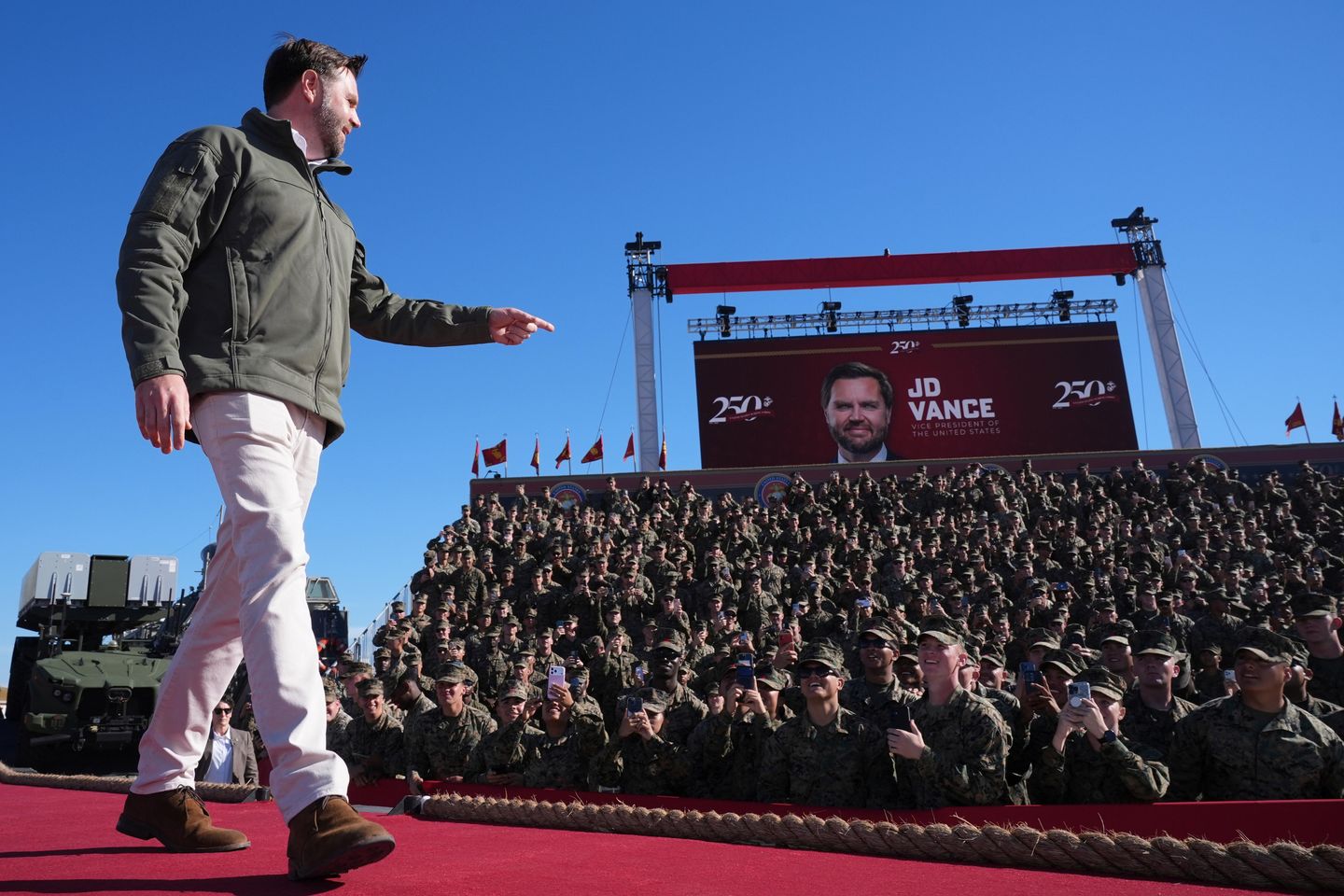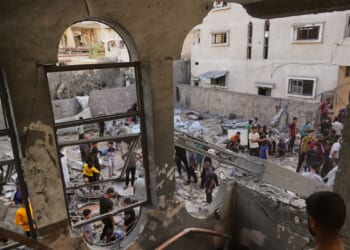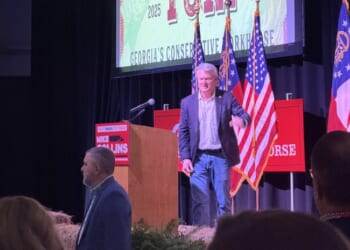
The California Highway Patrol said shrapnel from an artillery shell that detonated prematurely struck a squad car and a police motorcycle that were part of Vice President J.D. Vance’s protective detail during his visit over the weekend to a Marine Corps base near San Diego.
On Saturday, a 155mm M-777 howitzer was fired at Camp Pendleton, about 40 miles north of San Diego, as part of a demonstration to mark the 250th anniversary of the U.S. Marine Corps.
According to a report from the California Highway Patrol, the Marines had been scheduled to fire at least 60 rounds during the visit by Mr. Vance, a Marine Corps veteran who served in Iraq.
The artillery round was fired at 1:46 p.m. from White’s Beach, about 3/4 of a mile south of Las Pulgas Road, where the California Highway Patrol vehicles parked after escorting Mr. Vance to the base.
California Gov. Gavin Newsom ordered the temporary closure of a 17-mile stretch of a highway near Camp Pendleton during the event.
Passenger rail service on a line running adjacent to the freeway was also delayed.
The move prompted a brief “Twitter War” between Sacramento and Washington.
“Not only did nobody at the White House or the Marines ask him to do so, the Marines repeatedly said there are no public safety concerns with today’s exercises,” according to a statement on X from the White House rapid response team that referred to the governor as “Newscum.”
“Newscum lies and tries to make it about himself – day ending in ‘Y’,” Trump administration officials said.
State officials accused the Trump administration of misleading California residents about live munitions being shot over the normally busy Interstate 5.
“Then you accused the governor of overreacting when he closed a portion of the freeway to protect the public,” Mr. Newsom’s press office said. “Now we learn that live [ordnance] detonated early, striking a vehicle on a closed portion of the highway during the event.”
The Marine Corps is investigating the incident, which is standard practice for the U.S. military when an artillery round misfires or lands outside the planned impact area.
Unlike a self-contained bullet, a howitzer round is usually comprised of multiple sections, including the powder, the primer, the shell, and a fuze. Depending on the mission, the fuze could be set to detonate on impact, when internal sensors determine the round is near the target, or at a specific moment after firing.
If a timed fuze malfunctions or is incorrectly set, it could cause an artillery round to prematurely detonate.
State police said they stopped traffic along Interstate 5 shortly before the artillery barrage was scheduled to be fired. The first, and apparently the sole, round was fired at 1:46 p.m., officials said in a report obtained by The Washington Times.
“At this time, an artillery round failed to clear the roadway and detonated mid-flight near Interstate 5 southbound. After the failed round, the exercise was terminated and no additional munitions were fired,” California Highway Patrol officials said in their report.
One of the state officers on the protective detail reported hearing what sounded like pebbles falling on his police motorcycle. Officers also found small pieces of what appeared to be shrapnel that left a small dent on the hood of a patrol car.
A safety sweep of Interstate 5 southbound did not turn up any additional pieces of metal, according to the California Highway Patrol.
Although there were no reported injuries, state law enforcement officials immediately notified the Marine Corps which canceled the remaining fire.
“This was an unusual and concerning situation. It is highly uncommon for any live-fire or explosive training activity to occur over an active freeway,” California Highway Patrol border division chief Tony Coronado said in a statement.
“As a Marine myself, I have tremendous respect for our military partners, but my foremost responsibility is ensuring the safety of the people of California and the officers who protect them,” he said.
The California Highway Patrol is recommending a review into the planning, communication, and coordination that took place on Saturday between federal, state, and local government agencies.











